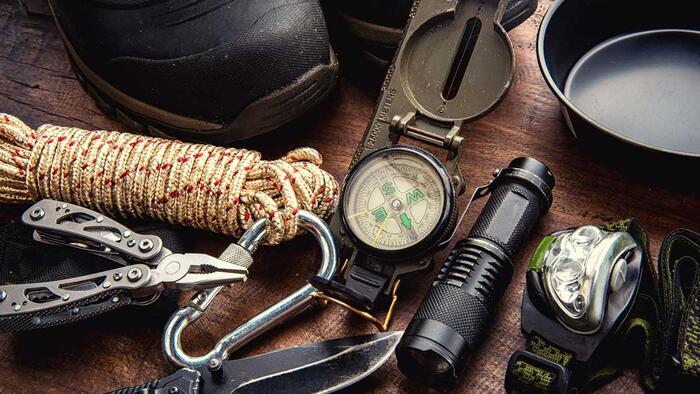Self-Rescue: Taking Natural Disaster Preparedness Seriously
Natural disasters are unpredictable and often devastating, as history shows that many do not take their threats seriously until harm occurs. Fortunately, technological advancements have significantly reduced casualties over the past century. For instance, Hurricane tracking has improved vastly with satellite technology, allowing for earlier warnings and preparedness. Nevertheless, some disasters offer little to no warning, such as earthquakes and many flood events, demonstrating that while forecasting has improved, not all risks can be effectively communicated or avoided. People often confuse statistical terms like a "100-year flood" to imply rarity, failing to grasp that the risk is independent each year, ultimately leading to a surprising chance of flooding within residential timelines, especially for those living in high-risk areas.
As disasters strike, immediate rescue and relief often focus on highly populated areas first due to resource constraints, which can leave those in less populated areas to fend for themselves for longer durations. Hence, individuals are encouraged to prepare not only for themselves but also for possible solitude in the aftermath of such events. Understanding basic human needs is paramount during disasters—breathable air, drinkable water, personal shelter, and personal safety are the cornerstones of survival. Air quality can quickly deteriorate due to fires or industrial contamination, necessitating the need to evacuate immediately upon detecting danger. Water, on the other hand, is critical for survival within days; therefore, individuals should plan how to procure or store sufficient supplies ahead of any crisis.
In addition to air and water, personal shelter becomes vital when housing structures are compromised. Staying dry and insulated against the elements is crucial to stave off hypothermia, especially in cold weather. Equipped with tools and appropriate clothing—such as rain gear and blankets—individuals boost their chances of weathering the immediate aftermath. Alongside securing physical safety, considerations for personal protection become crucial. The reality is that without immediate access to medical care, even minor injuries can escalate into life-threatening situations.
When it comes to communication during emergencies, expectations should be tempered given that conventional networks may fail. The use of alternative communication methods like HAM radios becomes critical when traditional systems collapse. Even basic devices, such as a Beofeng radio, hold the power of connecting people while being cost-effective. Furthermore, pre-programming local repeaters can facilitate emergency reach-out when rapid communication is paramount. Although radios require power to operate, their availability during crises can make them invaluable tools not only for information exchange but also for rallying help.
In regions prone to natural disasters, maintaining energy reliability is crucial. Backup energy sources, including generators, can support essential utilities, like refrigeration, lighting, and water supply pumps. A well-planned energy strategy involves regular maintenance and rotation of fuel supplies, ensuring fuel is fresh and operational when needed. Additionally, for homes reliant on well water, understanding the pump requirements and fitting it with necessary adaptations allows access to water during extended outages. In colder climates, strategies for maintaining warmth and operational heat sources take precedence, as running conventional heating systems often becomes impossible without adequate power on hand.
The moment services become strained post-disaster, individuals must shift their mindset to self-rescue. Following this period requires critical assessments of personal supplies and capabilities, prompting people to ask—what happens if essential supplies run out? Physical fitness and resilience to handle potential hardships are vital. The ability to carry necessary resources over distance directly influences survival outcomes. Preparation means assessing oneself not just concerning supplies but evaluating personal physical capabilities in adverse conditions. Ultimately, preparedness blends wisdom, resourcefulness, adaptability, and a healthy understanding of one’s environment and possible risks, cultivating a culture of self-rescue in a world increasingly prone to natural threats.
In conclusion, the message is clear: individuals must not become complacent in the face of potential disasters. Emphasis on self-sufficiency through preparedness is vital, as the reality after a calamity often involves waiting for help that may take longer to arrive than anticipated. Early action and a clear mindset can be the difference between mere survival and successful self-rescue. It is imperative to develop plans, stock supplies, and maintain awareness of one’s community resources, thereby equipping oneself not only for immediate resilience but also for longer-term self-reliance during challenging times ahead.

